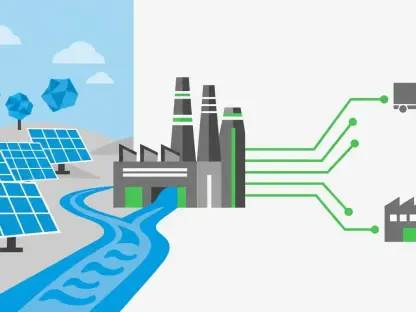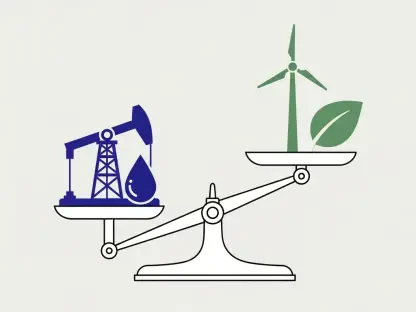How Will Malaysia’s New Gas Power Plant Impact Its Energy Goals?
The inauguration of the Pulau Indah power plant marks a significant milestone in Malaysia’s energy landscape. This 1,200-MW natural gas-fired facility, strategically located approximately 37 miles from Kuala Lumpur in Selangor, is poised to support the country’s burgeoning population and thriving economy. Developed by Worldwide Holding Berhad (WHB), the facility comprises two blocks powered by cutting-edge GE Vernova 9HA.01 gas turbines operating in a combined-cycle configuration, each with a capacity of 600 MW. GE Vernova’s involvement extends beyond installation, as they have secured a 21-year contract to provide comprehensive maintenance services and sophisticated software solutions, leveraging their extensive expertise in gas turbines.
Despite its reliance on fossil fuels, the Pulau Indah plant is designed to be a cornerstone of Malaysia’s energy transition. One standout feature of the HA turbines is their ability to burn up to 50% hydrogen when mixed with natural gas. This capability aligns with Malaysia’s ambitious National Energy Policy, which aims for net-zero emissions by 2050. This policy emphasizes the need to reduce emissions associated with development projects while also increasing power generation to meet the growing demand of a population projected to exceed 40 million by mid-century.
Advanced Technology for Sustainable Energy
Natural gas is favored in Malaysia’s energy strategy for its availability and lower carbon dioxide emissions compared to coal. This attribute makes it a vital component of the country’s plan to balance environmental objectives with growing energy needs. Gas-fired units like those at Pulau Indah are prized not only for their lower emissions but also for their operational flexibility, which is essential for managing peak power demands. Moreover, they facilitate the integration of renewable energy sources into the grid, thereby enhancing the overall stability and sustainability of Malaysia’s power supply.
The implementation of advanced technology is crucial to the plant’s success and overall efficiency. GE Vernova will deploy its Mark* VIe Distributed Control System software, which allows for continuous monitoring and analysis through its state-of-the-art Monitoring & Diagnostics Center in Greenville, South Carolina. This system aims to optimize asset visibility, reliability, and availability, all while minimizing operation and maintenance costs. The continuous insights provided by this sophisticated software ensure that the plant operates at peak performance, thereby maximizing its contribution to Malaysia’s energy goals.
Meeting Growing Demand and Environmental Goals
As Malaysia continues to grow, so too does its energy consumption. The Pulau Indah power plant stands as a critical asset in meeting this burgeoning demand. With the nation’s population expected to surpass 40 million by mid-century, the need for reliable and efficient power generation cannot be overstated. The plant’s ability to produce 1,200 MW of power while adhering to stringent environmental standards underscores its importance in Malaysia’s energy strategy. It represents a balanced approach to meeting future energy needs while minimizing environmental impact.
Furthermore, the plant’s ability to utilize a mix of natural gas and hydrogen enhances its environmental profile. By incorporating hydrogen, a cleaner-burning fuel, Pulau Indah can significantly reduce its carbon footprint. This capability is particularly important as Malaysia strives to meet its net-zero emissions target by 2050. The integration of hydrogen technology not only positions the plant as a leader in sustainable energy production but also sets a precedent for future power generation projects in the region.
Conclusion: A Strategic Step Towards Sustainability
The inauguration of the Pulau Indah power plant is a major milestone in Malaysia’s energy sector. This 1,200-MW natural gas-fired plant is strategically situated about 37 miles from Kuala Lumpur in Selangor. It aims to support Malaysia’s rapidly growing population and expanding economy. Developed by Worldwide Holding Berhad (WHB), the power plant features two blocks powered by state-of-the-art GE Vernova 9HA.01 gas turbines in a combined-cycle setup, each generating 600 MW. GE Vernova will also provide maintenance and software solutions for 21 years, drawing on their vast gas turbine expertise.
Despite using fossil fuels, the Pulau Indah plant is a key element in Malaysia’s energy transition. Its HA turbines can burn up to 50% hydrogen when mixed with natural gas, supporting Malaysia’s National Energy Policy, which seeks net-zero emissions by 2050. This policy underlines the importance of reducing emissions from developmental projects while increasing power output to meet the demands of a population expected to exceed 40 million by mid-century.









